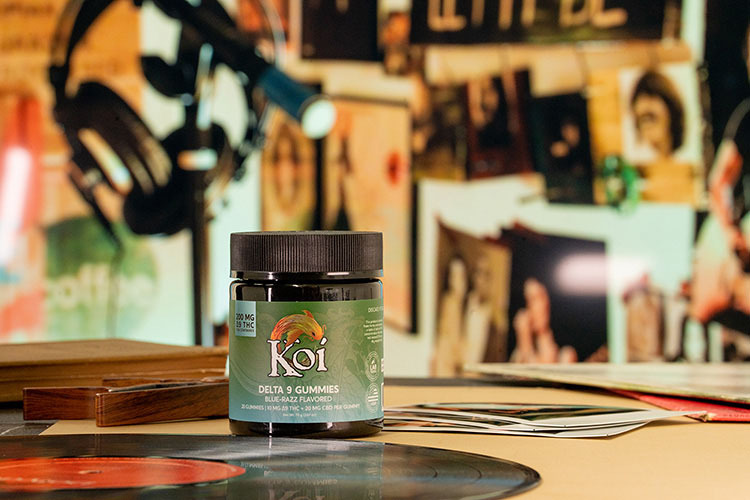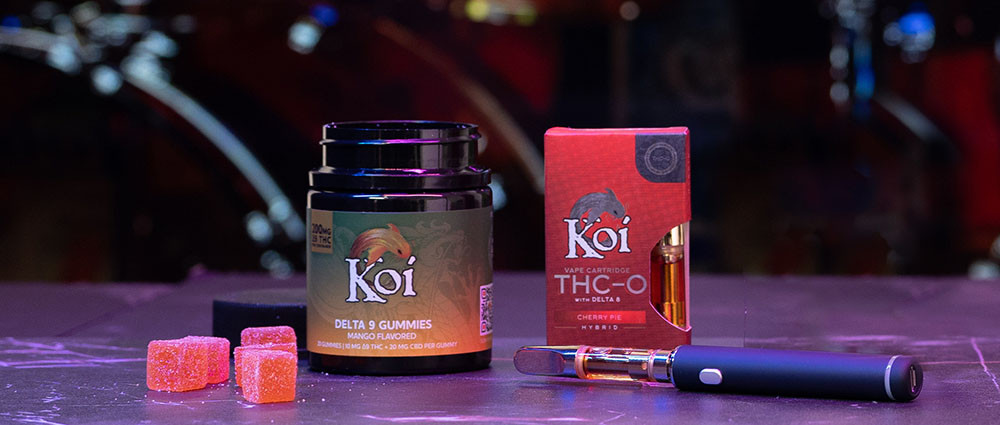THC-O and delta-9 THC produce strong elevating effects, but THC-O is three times more potent. Discover how the two hemp cannabinoids compare in effects, sources, and legality.
Key takeaways:
- Delta 9 and THC-O are hemp-derived cannabinoids that can deliver hard-hitting elevating effects.
- For most people, THC-O is roughly three times more potent than delta-9. But your experience with them can vary and depends on various personal factors.
- Delta 9 is a naturally occurring compound found in every hemp plant, whereas THC-O isn't and always needs to be created by converting it from hemp-derived CBD.
- Both cannabinoids are federally legal to buy and use in the United States, provided they come from hemp and contain no more than 0.3% delta-9 THC by dry weight.
Today we have the opportunity to experience more of what hemp offers. Thanks to the 2018 Farm Bill passage, hemp and its many valuable compounds are federally legal. And as such, the cannabinoid industry is booming.
You've seen it. New cannabinoids seemingly pop up every day. For some, perhaps you, it's getting harder to keep tabs on what cannabinoids are available and how they can help you feel and function better. Each offers unique advantages, so it's worth taking a little time to learn about their differences and similarities.
THC-O and delta 9 are two hemp cannabinoids often compared to each other. They have strikingly similar chemical names (delta-9-tetrahydrocannabinol and tetrahydrocannabinol acetate), which is enough to confuse. But beneath their remarkably identical names, numerous differences between the two compounds can help you identify the best one.
Definition
There's more to delta 9 and THC-O besides the name. As the saying goes, the devil is in the details. Although THC and THC-O have very similar names, their definitions are a great place to start forming the basis of the differences between the two compounds.
What is Delta 9?
Delta 9 is also fondly called good old THC. It's the most common type of THC. While it was first discovered and isolated by Israeli chemist Raphael Mechoulam in 1964, humans have used it for wellness for centuries. It is a naturally occurring compound found in every cannabis plant, including small amounts in hemp.
The compound is best known for its noticeably uplifting effects. People often turn to it when they want to relax at the end of the day or on the weekend. But it's also believed to have other wellness benefits to help you feel better. Most consumers already know and love the well-known, reliable, and potent compound.
What is THC-O?
THC-O is another type of THC and is the lesser-known of the two despite it having been around for decades. Also known as THC-O acetate, THC-O is the acetylated version of THC, which means it has an added acetyl group in its chemical structure.
Unlike delta 9, THC-O does not naturally occur in the hemp plant. But it's made from hemp using a process called isomerization. Scientists first extract natural CBD from the plant and then use a multi-step method to convert it into THC-O.
Because of their molecular similarities, the two compounds interact with the endocannabinoid system similarly. But THC-O is thought to be more potent so you can expect harder-hitting effects.
Learn more: What is THC-O? and How Does THC-O Compare to Delta-8?

Comparison Between Delta 9 and THC-O
You've heard about the shared similarities between delta 9 and THC-O. Let's talk about their differences.
Cannabinoids have proven that the slightest differences can make a huge impact. The case is the same for the comparison between delta 9 and THC-O.
Both delta 9 and THC-O originate from the plant. Delta 9 naturally occurs in the plant and can be extracted directly. But in hemp, it's only found in minimal amounts. So, it's also often made by converting it from CBD, a more abundant cannabinoid in hemp. So, if you use hemp delta 9 products, you can assume that the THC has come from CBD.
THC-O is created similarly. As with hemp delta-9, THC-O begins with extracting CBD from the hemp plant, which is then converted into delta 8 and finally into THC-O. Evidence suggests THC-O is safe and well-tolerated by most adults, provided this conversion process is completed responsibly. This is why you should only purchase THC-O from reputable brands that use the best ingredients to extract and prepare their THC-O products.
Chemical structure
Delta 9 and THC-O have nearly identical chemical structures except for one minor but impactful difference.
THC-O has a unique acetate group attached to its structure. As an acetylated version of THC, THC-O can more easily cross lipid-sensitive layers and reach more cannabinoid receptors. That's why it's significantly more potent than delta 9 and every other type of THC (except for THC-P).
Experiences
For most people, delta 9 delivers noticeably uplifting effects and creates a sense of calm and relaxation, making it a popular go-to for more restful sleep. Some also report feeling a natural mood-boosting impact, which is why delta 9 can be enjoyable when hanging out with friends.
THC-O also has noticeable effects and is often much more potent than delta-9. Separately, most people who use it also share that they experience a more spiritual or introspective effect from THC-O than they do with other cannabinoids. THC-O can be enjoyable when you're interested in stimulating deep thought or enhancing solo activities like meditation, spiritual reflection, or music.
However, as with other cannabinoids, the effects can vary from person to person. What you experience from delta 9 and THC-O can be different from someone else.
Potency and serving sizes
Regardless of which cannabinoid you choose, having a good experience greatly depends on one factor: using the right amount. Therefore, consider your tolerance and experience with elevating cannabinoids when you decide on your delta 9 and THC-O servings.
With delta 9, it comes down to your tolerance level and how long you have been using it. For beginners or infrequent users, a small serving of 2.5mg is often enough to feel the effects. If you're more experienced, you will enjoy a higher serving of 10 to 25mg.
It would be best if you were even more considerate with THC-O. The anecdotal stories and early research suggest that you may feel THC-O three times as strong as delta 9. So it would help if you started with an even lower serving, especially on your first go-around with THC-O. Beginners should stick with delta-9. But even experienced connoisseurs should scale down their servings by about a third when transitioning to THC-O, then build upwards gradually.
Onset of effects
Another factor to consider when comparing THC-O and delta 9 is that THC-O effects can take longer to kick in.
With delta 9, the time it takes for the onset of the effects depends on your method of consumption. Inhaling using vapes is the fastest. The results should kick in within 15 minutes. Edibles, like delta 9 gummies, can take 30 to 60 minutes. Of course, other factors like body composition are also at play here, so the timelines can differ.
For THC-O, it often takes longer. This is because it's inactive until the liver metabolizes it, so give yourself anywhere between 30 to 60 minutes to begin feeling the effects, even when inhaled using THC-O vape cartridges. And expect to wait even longer with edibles like THC-O gummies. Go slow when trying out THC-O. Give yourself up to two hours before taking a second serving of THC-O if you don't feel the effects.

Legality and availability
Both delta 9 and THC-O come from hemp, which means they are legal at the federal level if they meet specific stipulations.
All hemp-derived products are federally legal as per the 2018 Farm Bill as long as they:
- Are hemp-derived
- Contain no more than 0.3% delta-9 THC by dry weight
Some states have passed more specific laws around these hemp cannabinoids. Therefore, you should check the legal status of both compounds before purchasing either product.
Mixing THC-O and Delta 9: Is it safe?
You may wonder if it's okay to consume both cannabinoids. You can blend THC-O with delta 9 or other cannabinoids to create your preferred experience and formula. For example, our Koi Dragon Blend Gummies combine THC-O with delta-9 THC and delta-8 THC to create more complex effects.
Although delta 9 and THC-O are different, the takeaway doesn't have to be how different they are but how you can use them together to get the best experience.
Cannabinoid Education
There's much more to learn about these cannabinoids and others. We encourage you to check out the Koi blog, a valuable resource on hemp's cannabinoids and how they can help you feel and function better. Or visit our online CBD shop to get started with delta-9 and THC-O.





